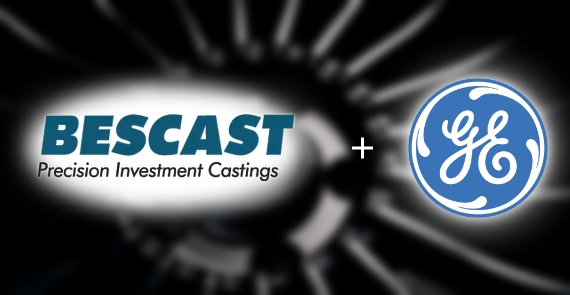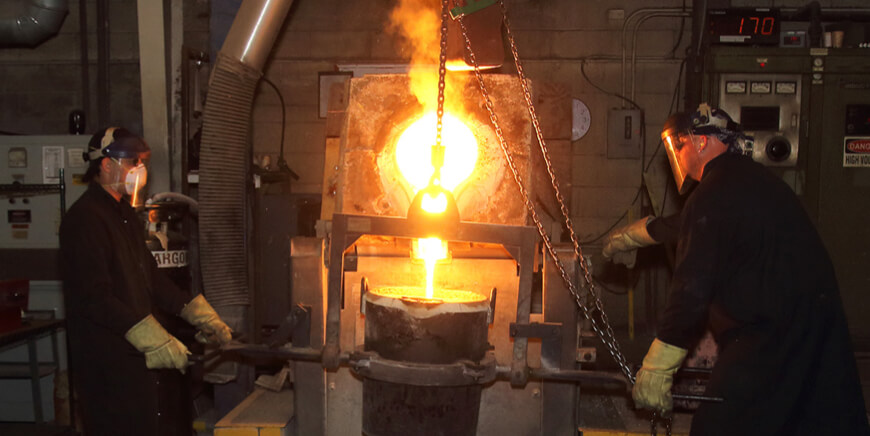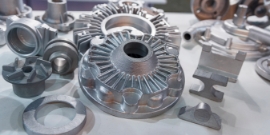Call Us: 440-946-5300
BLOG
What Is Aerospace Casting? A Guide to Precision Casting in Aviation
Aerospace casting is the backbone of modern aviation, responsible for crafting the essential parts that make flight possible. From jet engines to structural components, these castings handle extreme demands with precision and reliability. Investment casting is a favorite in the industry for its ability to create complex, high-performance parts with incredible accuracy.
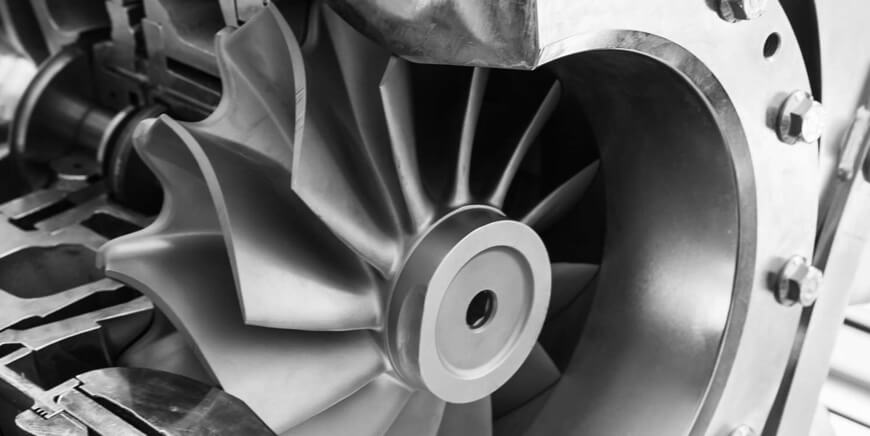
Table of Contents
What Is an Aerospace Casting?
Aerospace casting is the foundation of countless components used in aviation, from turbine blades to structural airframe parts. It’s a manufacturing process where liquid metal is poured into a mold to form intricate shapes that meet the aerospace industry’s high standards for strength, precision, and durability.
Because investment casting produces complex geometries, it's often the go-to choice for aerospace casting manufacturers. They engineer these castings to handle extreme stress and temperature, making them essential for critical aerospace components like airfoil castings and many structural castings. Aerospace castings are where engineering precision meets industrial strength.
The Role of Investment Casting in Aerospace
Investment casting is a cornerstone of aerospace manufacturing for good reason. The process allows aerospace casting manufacturers to create components with incredible precision and complexity — features that are non-negotiable in aviation. From structural castings to jet engine parts castings, investment casting delivers unmatched accuracy and reliability.
Aerospace investment casting involves a few basic steps:
- Wax is injected into a metal die that precisely matches the end product.
- The wax patterns are assembled onto a sprue to create a tree.
- A shell is built up by repeatedly dipping the wax trees in a ceramic slurry.
- The wax is melted out of the ceramic shells.
- Molten metal is poured into the shells to create the end product.
- The ceramic shells are cooled.
- The ceramic shells are removed, revealing the end product.
What sets investment casting apart is its ability to produce near-net-shape parts, which create less material waste and require minimal machining. For aerospace applications, where every gram counts, this efficiency is critical. Investment casting ensures these components meet the exacting demands of the aviation industry while keeping production streamlined.
Materials Used in Aerospace Castings
The casting industry uses materials for aerospace applications that can manage extreme stress, high temperatures, and corrosive environments without compromising performance. Aerospace castings rely on advanced alloys specifically engineered for these challenges. Here are some of the most commonly used materials:
- Nickel-Based Castings: Known for their exceptional strength and resistance to heat and corrosion, nickel-based castings are a top choice for turbine blades and other high-stress aerospace components.
- Nickel Alloy Castings: Combining the durability of nickel with other metals, nickel alloy castings deliver enhanced flexibility and performance, ideal for airfoil castings and structural castings.
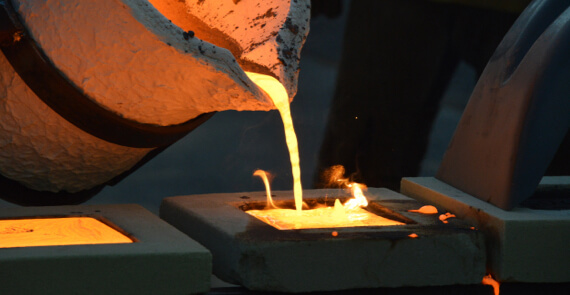
- Inconel Castings: This family of nickel-chromium superalloys excels in high-temperature environments, making it a go-to for aerospace components like turbine wheels and exhaust systems.
- Inconel 100 Castings: A specialized variant of Inconel, Inconel 100 castings offer unparalleled strength and fatigue resistance, critical for the most demanding aerospace applications.
These materials ensure each casting part can withstand the rigorous demands of modern aviation.
Applications of Aerospace Castings
Aerospace castings are crucial in modern aviation and show up in places where precision and performance aren’t optional. These castings are integral to numerous critical applications and ensure every flight operates safely and efficiently. Here’s a look at where they shine:
- Turbine Engines: Airfoil castings play a central role in turbine engines, ensuring optimal airflow and energy efficiency. These components must handle extreme temperatures and high rotational speeds, making precision a top priority.
- Fuel Systems: Intricate casting parts, such as fuel nozzles and pump impellers, ensure consistent fuel delivery and efficient combustion, keeping engines running smoothly.
- Exhaust and Combustion Systems: Inconel castings and other high-performance materials are used for exhaust components, where heat resistance is mandatory.
Investment casting in aerospace enables manufacturers to produce components that balance strength, weight, and precision. These applications underscore how vital investment casting is to the aviation industry’s ability to push boundaries.
Advantages of Investment Casting in Aerospace
Investment casting has earned its place in the aerospace industry by delivering a level of precision and efficiency that’s hard to match. Here’s why it’s the go-to method for creating high-performance aerospace components:
- Complex Designs with Precision: Investment casting allows aerospace casting manufacturers to produce intricate shapes, such as airfoil castings, with unmatched accuracy. This makes it ideal for components where even the smallest detail can impact performance.
- Material Efficiency: Since it creates near-net-shape parts, investment casting reduces material waste and minimizes the need for extensive machining. This efficiency is crucial for aerospace applications, where cost and weight savings matter.
- Superior Mechanical Properties: Because aerospace investment castings are crafted from advanced materials like Inconel and nickel-based alloys, they can handle extreme temperatures, stress, and corrosion without compromising durability.
- Versatility Across Applications: Investment casting adapts to a wide range of aerospace needs, providing consistent performance and quality regardless of the complexity of the part.
- Reliability at Scale: Whether it’s a single prototype or a full-scale production run, investment casting delivers consistent results, meeting the stringent demands of the aerospace industry.
Because it combines precision, efficiency, and material excellence, investment casting is critical to aerospace manufacturing, providing the reliability and performance that aviation demands.
Choosing the Right Aerospace Casting Manufacturer
Selecting the right aerospace casting manufacturer is necessary to ensure the quality and reliability of your components. With the demanding requirements of the aerospace industry, you need a partner that delivers exceptional castings and offers expertise and support throughout the process. Here’s what to look for:
Experience in Aerospace Casting
Choose a manufacturer with a proven track record in producing high-quality aerospace castings. Experience matters when precision is a requirement.
Aerospace Casting Consulting
A great manufacturer also provides guidance. Aerospace casting consulting can help you refine designs, select the right materials, and optimize the manufacturing process to meet your exact specifications.
Commitment to Quality
Look for certifications like AS9100 and ISO 9001, which demonstrate adherence to the rigorous quality standards required in aerospace manufacturing.
Advanced Capabilities
Manufacturers with expertise in investment casting for aerospace can deliver complex geometries, tight tolerances, and consistent results, whether you need prototypes or large production runs.
The right aerospace casting manufacturer is a partner that ensures your components meet the highest performance and safety standards. With the best team behind you, your castings will excel under pressure.
Aerospace Casting at Its Best
Bescast was integral to the development of GE's LEAP engine. See how our concurrent development capabilities made a difference in this aerospace casting project.
Trust Your Aerospace Casting to Bescast
Looking for precision, reliability, and expertise in aerospace castings? Bescast delivers high-performance investment castings tailored to the aviation industry’s toughest demands. Whether you need airfoil castings, structural components, or expert aerospace casting consulting, our team has the technology and experience to bring your project to life. Contact us today to discuss your application and discover how Bescast can meet your aerospace manufacturing needs.
Contact UsFrequently Asked Questions About Aerospace Casting
As an investment casting leader, Bescast fields numerous questions about aerospace casting. Here are some common inquiries we receive.
What are castings?
Castings are components formed by pouring liquid metal into a mold and having it solidify into a specific shape. This manufacturing process is used to create everything from simple parts to highly intricate designs, depending on the mold and method used. In the aerospace industry, castings are essential for producing precise, high-performance components like turbine blades, structural parts, and airfoil castings that can withstand extreme conditions.
How does solidification modeling improve the quality of aerospace castings?
Solidification modeling uses advanced computer simulations to predict how molten metal will solidify within a mold. This process helps aerospace casting manufacturers identify potential defects, like shrinkage or porosity, before production begins. Optimizing the mold design and casting parameters through modeling lets manufacturers improve the consistency, precision, and reliability of the final aerospace casting, reducing costly rework and ensuring higher-quality components.
What recent advancements have been made in aerospace casting technologies?
Advanced alloys, such as higher-strength nickel and Inconel variants, are being developed to enhance performance in extreme environments.
How do aerospace casting manufacturers ensure compliance with industry regulations?
Compliance is achieved through strict quality control measures and adherence to standards like AS9100 and ISO 9001. Aerospace casting manufacturers implement rigorous testing protocols to ensure each casting meets the required specifications. Additionally, thorough documentation and traceability are maintained to provide full accountability for every aerospace component produced.
Related Articles

CATEGORY
RECENT POSTS



